While the U.S.-spec Honda HR-V sadly doesn’t have any sort of electrification, the global HR-V is available as a hybrid and an all-electric variant. The Honda HR-V Electric features a modified design and its name changes depending on the market. In China, the nameplate even varies according to the joint venture company which manufactures it.
In March, I had a chance to explore it in Thailand, where it’s sold as the ‘Honda e:N1.’ The pure-electric small SUV was on display at the local motor exhibition, where I got to experience its design, interior and features in detail.
Design
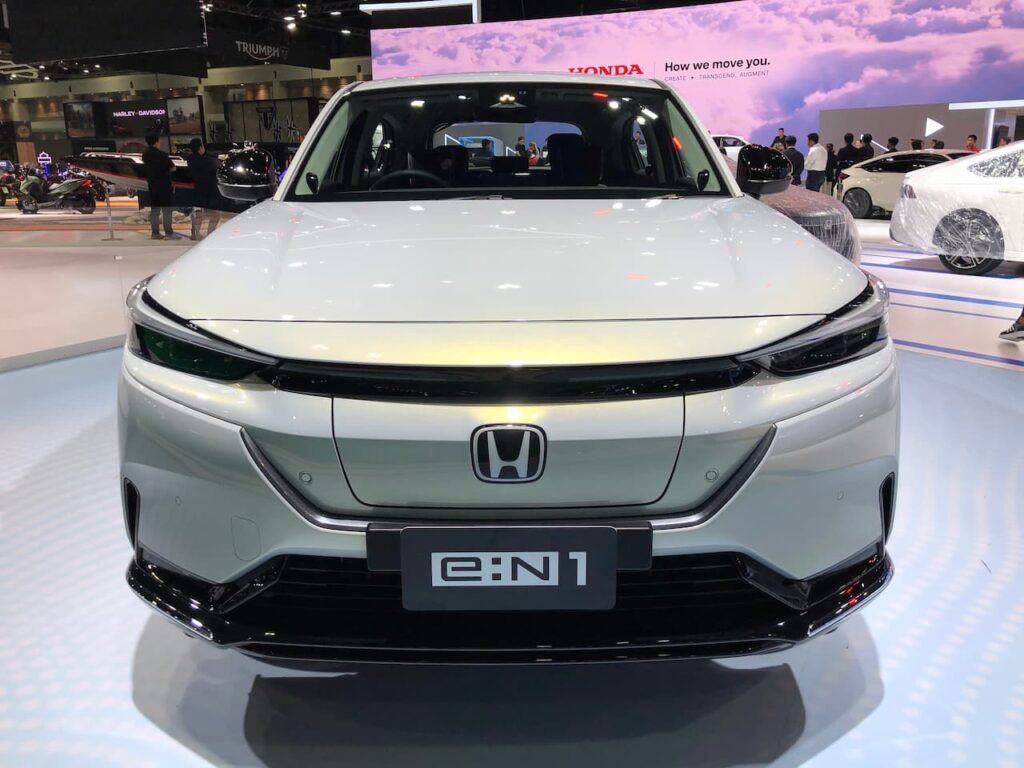
The Honda e:N1 has the same shape as the global HR-V, meaning that it retains the hunkered-down appearance with a steeply raked back glass. When I saw it in person at the 2024 Bangkok International Motor Show, I liked its upright and confident front, where it features sleek headlights with bold graphics, a sporty bumper, and a wide, electrically opening charge port door. I observed two super-slim lights subtly integrated into a black panel that illuminate when the charge port door is opened.
At the back, the clear tail lamps and full-width light bar add to the sportiness of the e:N1. A widely spaced brand inscription, akin to the Honda Prologue, lends sophistication, mimicking the styling of luxury models.
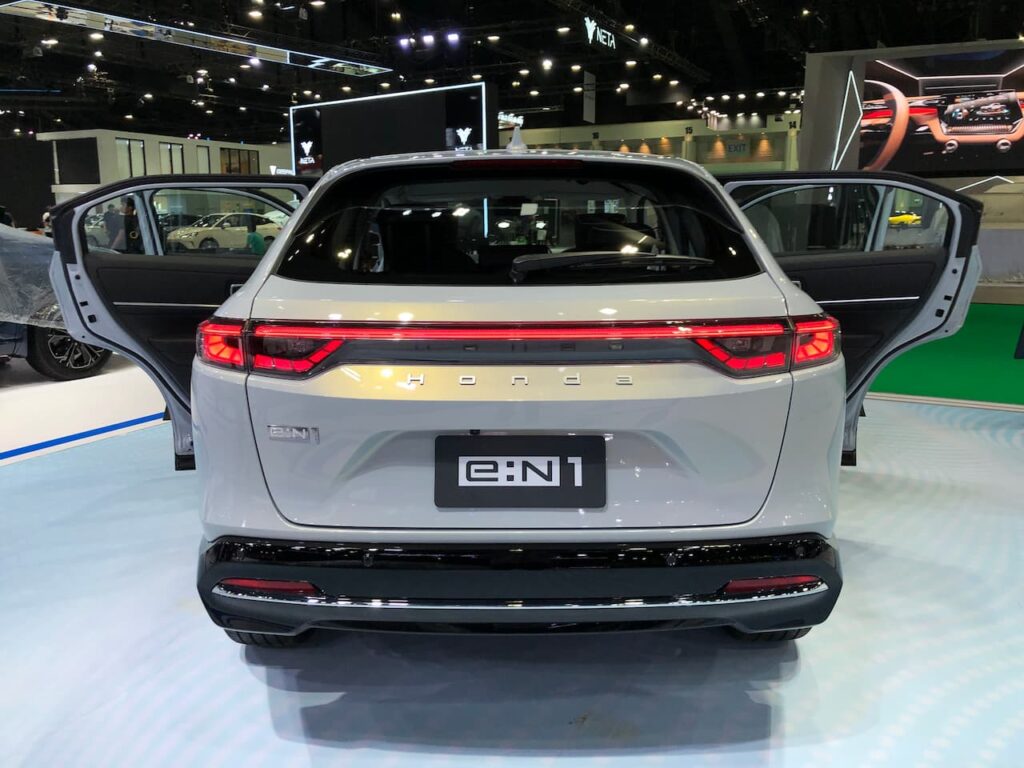
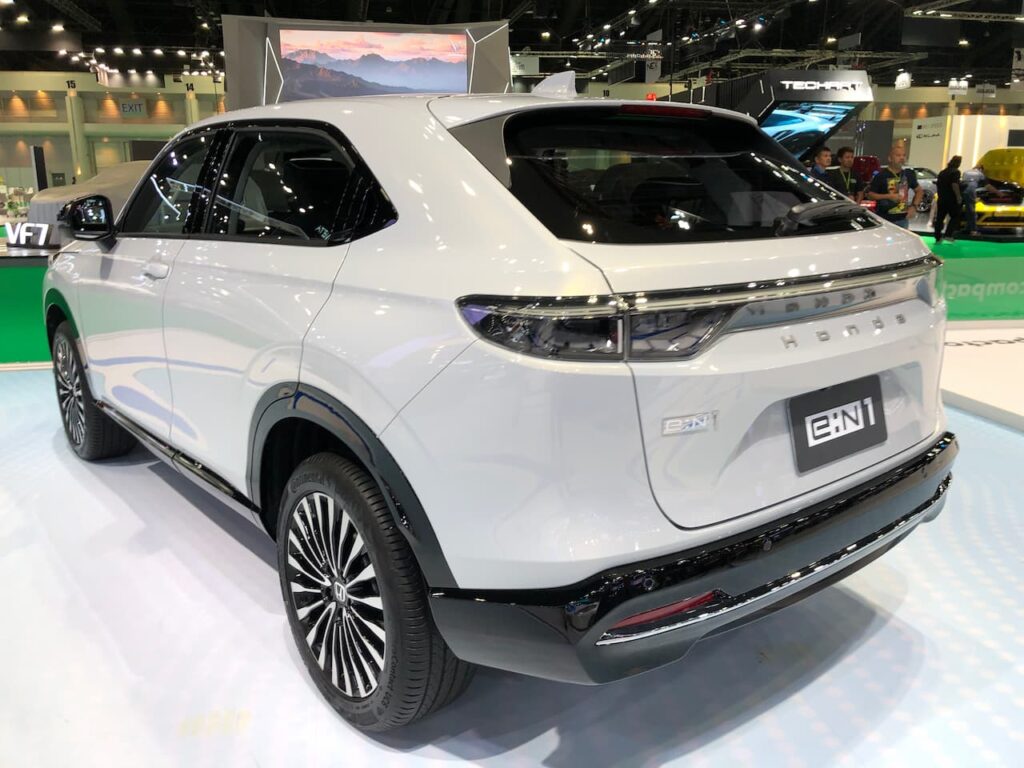
After spending some time examining its build, I did not find any unusual panel gaps on its body. I understand the company offers the vehicle in only one color, Premium Sunlight White (Pearl), which will disappoint customers who prefer darker shades.
Interior
Thanks to my 5’7” height and the straight roofline of the Honda e:N1, ingress and egress posed no issue for me, neither in the front nor in the back. However, I believe Honda designed the HR-V Electric with average height individuals in mind, which could make entry and exit less convenient for those over six feet tall.
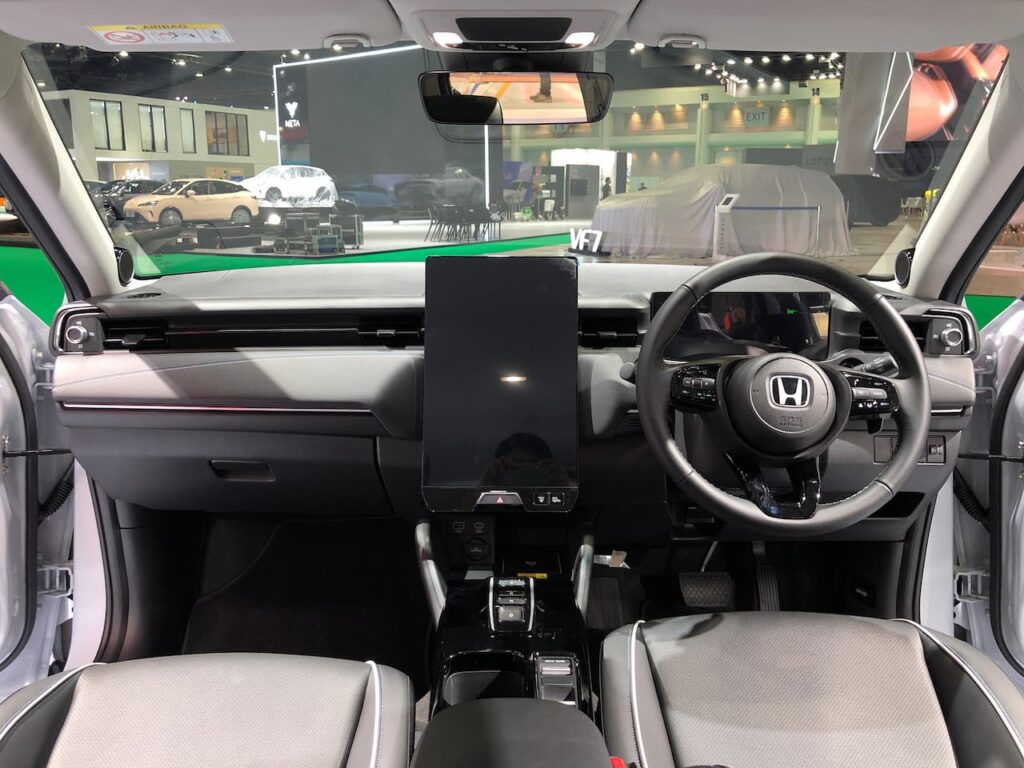
When I sat in the driver’s seat, I had about five and a half inches of headroom left. The floor wasn’t very high, and I had good under-thigh support in this seat, which featured a power-adjustable cushion and backrest. The lumbar support was good, and the seat’s substantial side bolstering made me feel snugly tucked in.
The compact steering wheel felt comfortable and grippy to use. The quality of switches, buttons, and other physical controls was on point. I found hard plastics in the lower areas of the interior, such as the door panels, for instance, but overall, the quality was good. I had no complaints with the all-around visibility in the e:N1.
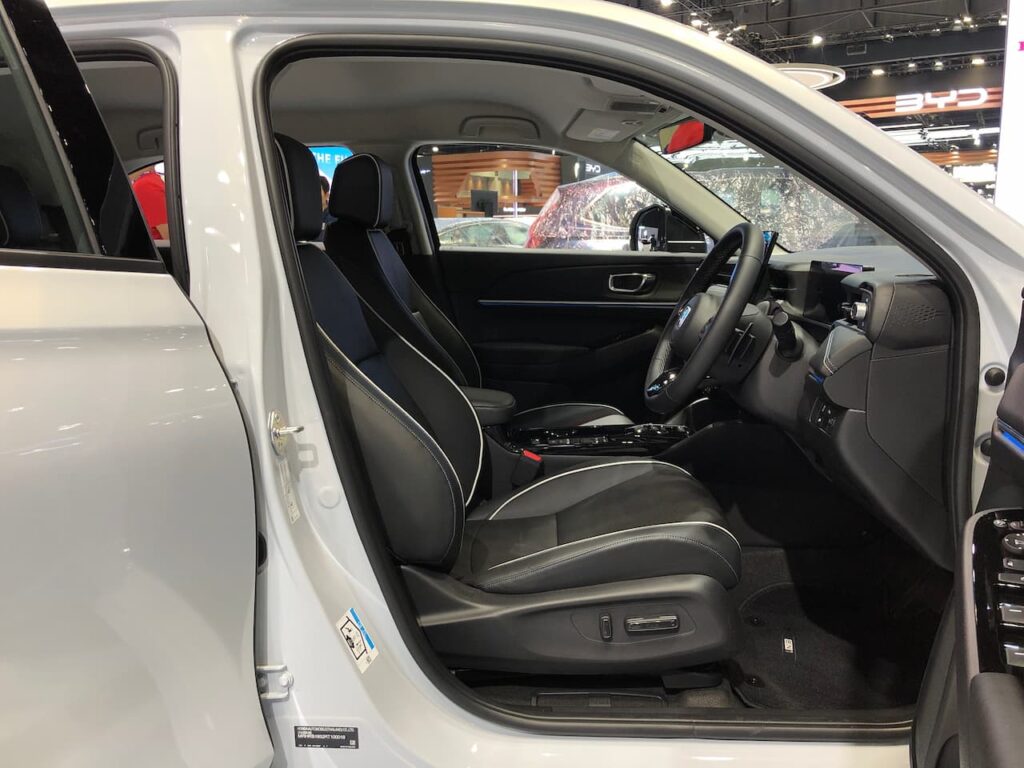
In the back, I had good legroom and plenty of knee room behind the driver’s seat. The under-thigh support was better than I expected. The backrest didn’t recline, but the angle was comfortable, and the headrest was quite supportive. I had about two inches of headroom left, and I surmise that tall people wouldn’t find themselves very comfortable here.
There was a small hump in the central area of the floor, which slightly affected the under-thigh support in the middle position of the bench. However, the backrest wasn’t very comfortable here because of the fold-out armrest and my head was touching the headliner. I think the center position is best suited for kids.
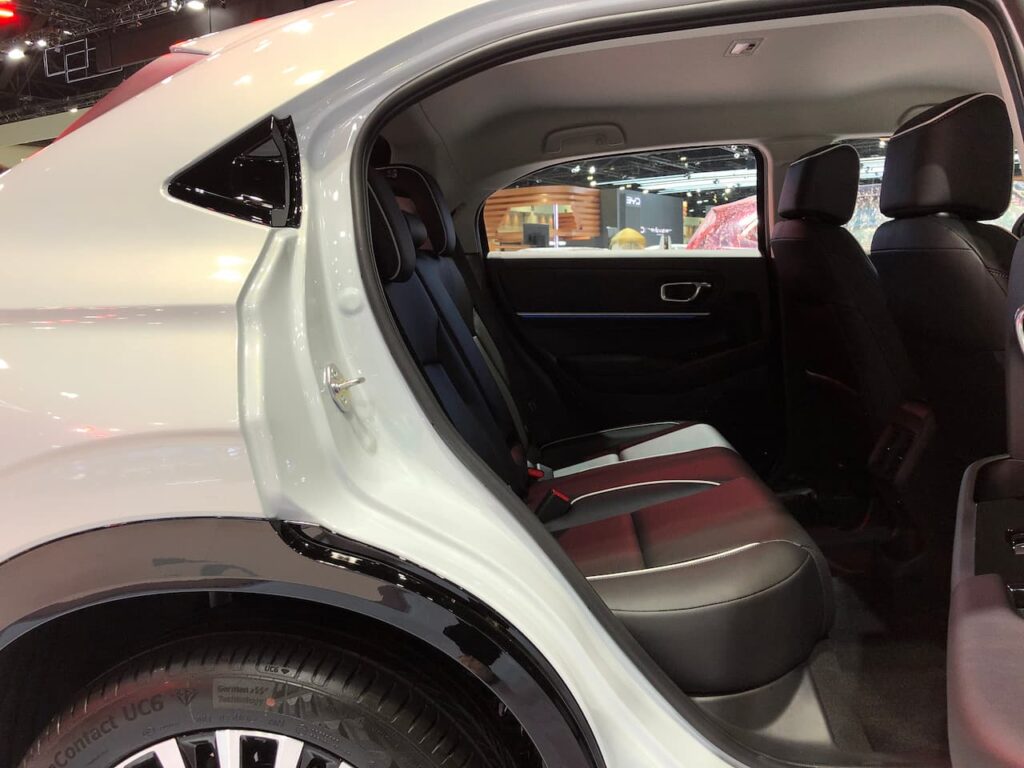
Honda offers the e:N1 with interior features like a dual-zone automatic climate control system, 8-way power driver’s seat, wireless smartphone charger, rear AC vents, 10.25-inch digital instrument cluster, and 15.1-inch portrait touchscreen infotainment system with wireless Apple CarPlay, Android Auto, and navigation.
The company equips it with ADAS functions like Lane Keeping Assist System (LKAS), Road Departure Mitigation System with Lane Departure Warning (RDM with LDW), Adaptive Cruise Control with Low-Speed Follow (ACC with LSF), Collision Mitigation Braking System (CMBS), and Lead Car Departure Notification System (LCDN).
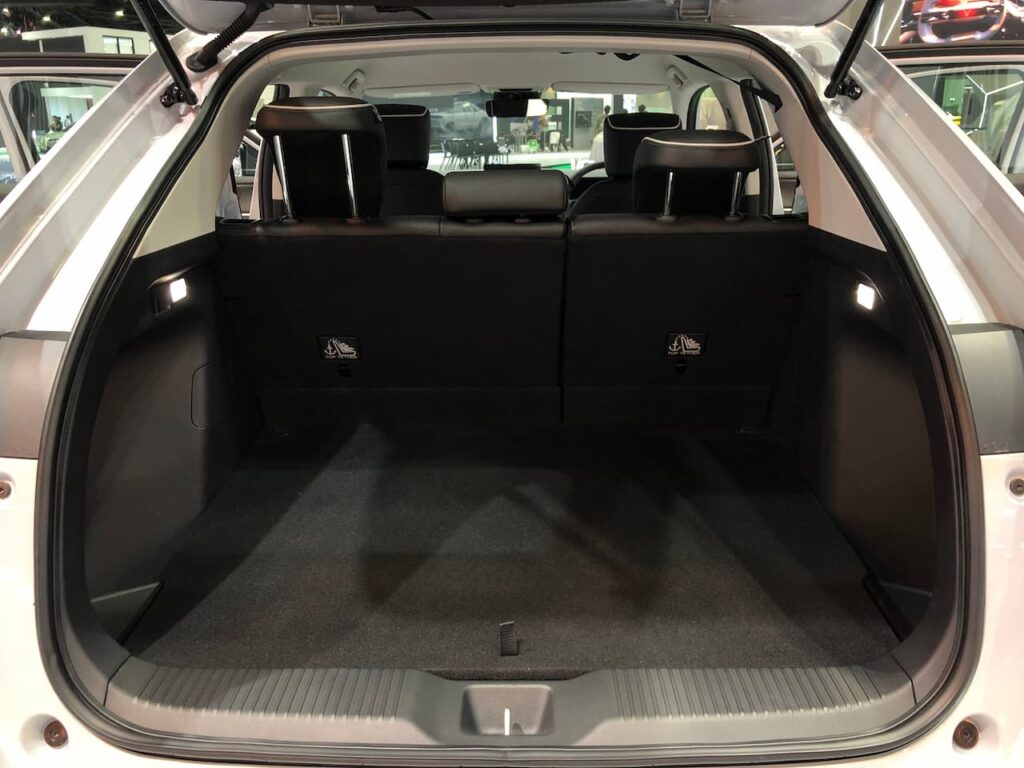
Specifications
The Honda e:N1 employs a single electric motor, which produces 150 kW (201 hp) and 310 Nm (229 lb.-ft.) of torque and drives the front wheels. Supplying energy to the drive unit is a 68.8 kWh lithium-ion battery pack, which gives the EV an NEDC range of 500 km (311 miles).
Price
The Honda e:N1 is only available to lease, for a monthly payment of THB 29,000 (48-month plan). That amount converts to USD 784, which means it’s very expensive. In the U.S., customers can lease the Hyundai Kona Electric from as low as USD 169/month (24-month plan). The South Korean model may not offer the same power, but it boasts more appealing features and range.
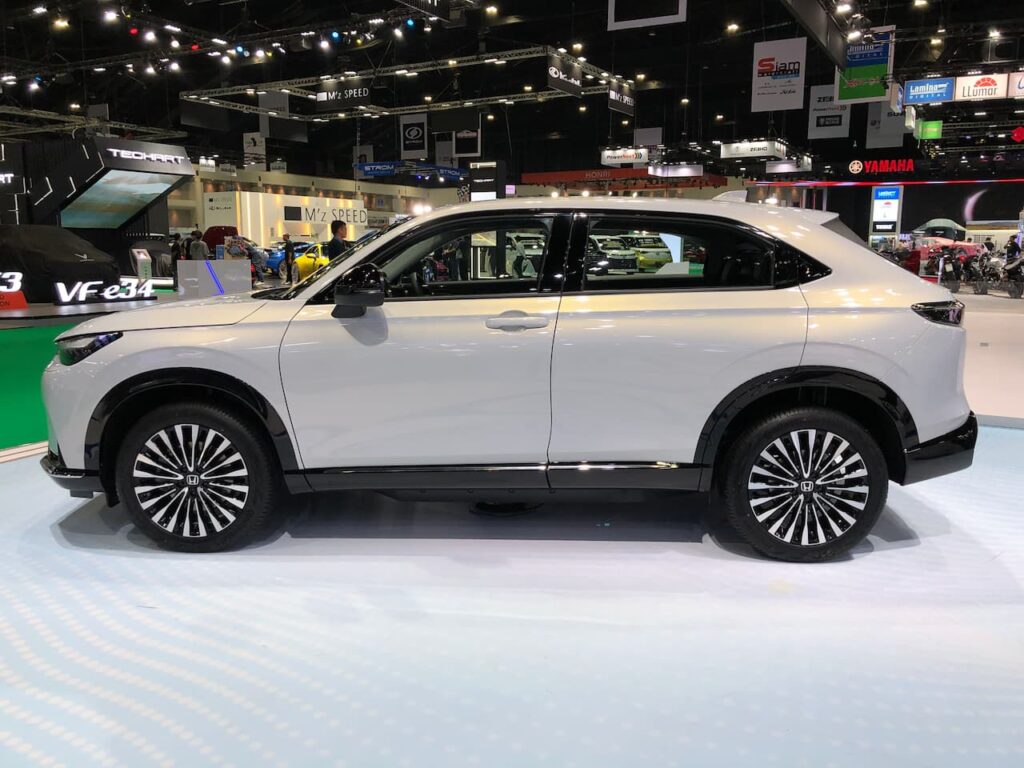
TopElectricSUV says
The Honda e:N1 is a stylish compact EV with handsome looks, good quality, usable range, and a wide range of premium features. However, its exorbitant pricing puts it out of reach for many customers.

I got my Master’s in Business Management & Administration and have been an International Automotive News Editor since 2014. I’ve traveled to global motor shows and automotive events, driven various types of vehicles, and focused on hybrid and electric cars in the last 4 years.









